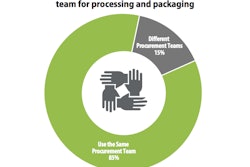
This museum tells an amazing story of patents, inventions, and innovations spawned by various Daytonians over the past century or so (think the cash register, the airplane, the self-starting ignition for car engines, the LCD screen, and the pop-top can, to mention just a few).
My visit to this manufacturing museum got me thinking about the state of manufacturing in the U.S. these days, which, as it turns out, is alive and well. At least that’s what we hear from a study called “Manufacturing and Logistics: A Generation of Volatility & Growth,”released June 13 by theBall State Center for Business and Economic Research (CBER) andConexus Indiana. According to the study, U.S. manufacturing production grew 11 percent since the dot.com bust of 2000-2003 and the ensuing economic turbulence of the 2001 and 2007-09 recessions.
“According to folklore, this has been a terrible generation for manufacturing and those who move goods,” says CBER director Michael Hicks, who is the George and Frances Ball Distinguished Professor of Economics and Business Research at Ball State. “That isn’t really what the data says. Indeed, 2015 was a record manufacturing production year in inflation-adjusted dollars. While 2016 fell just short with some weakness in the first and second quarter, 2017 looks to be a new record year. Most of the confusion about manufacturing and logistics is due to declining employment over the past generation. The fact is, manufacturing firms have become very lean, and productivity growth means more goods produced with fewer workers.”
According to the study’s authors, three factors contribute to a decline in employment: the workforce is better educated and trained, increasing productivity; mechanization has displaced some workers; and improved processes, such as Lean Six Sigma and other management methods, have increased manufacturing production. Since peak manufacturing employment in 1979, the U.S. has lost approximately 7.5 million manufacturing jobs but gained more than 9 million jobs in trade, transportation, and utilities, the broadest measure of the logistics industry.
“Growth in trade and productivity shifts job opportunities to other places and other sectors even as employment grows,” says Hicks. “We are at peak U.S. employment right now.”
The Ball State study paints a positive picture of the state of manufacturing in the U.S. But if manufacturing production is to keep growing as it has, one essential component required is a modern workforce. That’s why PMMI has signed on with the National Association of Manufacturers (NAM) to support the reauthorization of the Carl D. Perkins Career and Technical Education Act, designed to help Americans develop the skills they need to compete for high-skilled, in-demand jobs. With employers across the country reporting a shortage of skilled workers to fill positons in manufacturing, modernized and relevant career and technical education (CTE) programs are central to overcoming this skills gap.
“PMMI members are struggling to find the right technical talent required to fuel the innovation needed in our industry,” says Glen Long, Senior Vice President at PMMI. “Programs such as Perkins CTE will go a long way toward ensuring our members, and the industry as a whole, have the right people with the right skills to move our industry forward and compete in a global market. We are proud to stand with NAM and support the legislation.” (See page 12 for more on this pending legislation.)
One final note on that museum in Dayton. Eastman Kodak Co. has just announced that its Dayton-based Enterprise Inkjet Systems Division will mark the 50th anniversary of its high-speed ink-jet technology by adding an exhibit to the museum. Nice move, Kodak—who knew ink-jet printing was half a century old?

























